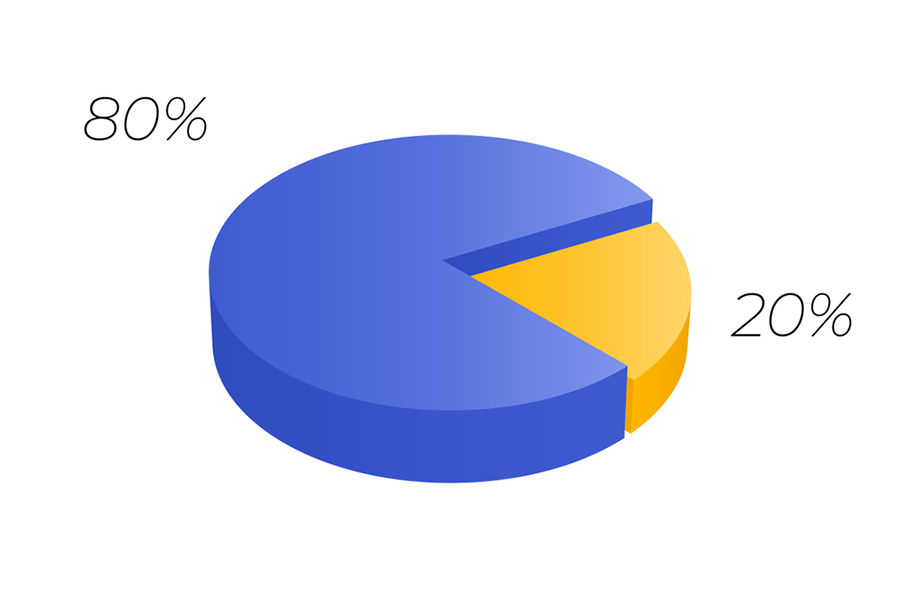In today’s data-driven world, analytics plays a crucial role in deriving meaningful insights and making informed decisions. However, analyzing vast amounts of data can be overwhelming. That’s where data sampling techniques come into play. Sampling allows us to select representative subsets of data for analysis, making the process more manageable and efficient.
In this comprehensive guide, we will delve into the world of data sampling in analytics. We will explore various techniques, understand their importance, and discover how they impact data-driven insights. So, let’s embark on this journey to master data sampling!
Understanding Data Sampling

Data sampling involves selecting a subset of data from a larger population to draw inferences about the entire population. It is essential to choose the right sampling technique to ensure the selected subset accurately represents the population’s characteristics. Effective data sampling can lead to reliable insights and informed decision-making.
Simple Random Sampling
Simple random sampling is the most basic form of sampling. It involves selecting individuals from a population entirely by chance, where each individual has an equal chance of being selected. This technique ensures unbiased representation of the population.
Advantages
- Representativeness: Simple random sampling provides an unbiased representation of the population, making it suitable for various research scenarios.
- Ease of implementation: This technique is easy to understand and implement, making it accessible to researchers with minimal complexity.
- Statistical validity: Simple random sampling enables the application of various statistical analyses due to its probabilistic nature.
Limitations
- Inefficiency with large populations: Simple random sampling can be inefficient when dealing with large populations, as it requires a complete list of individuals from which to sample.
- Potential under-representation: Due to the random nature of selection, some subgroups within the population may be underrepresented or not represented at all.
Stratified Sampling
Stratified sampling involves dividing the population into distinct subgroups or strata based on specific characteristics, such as age, gender, or location. Within each stratum, a sample is randomly selected proportionate to its representation in the population. Stratified sampling ensures that each subgroup is adequately represented in the sample, allowing for more precise estimations within individual strata.
Advantages
- Increased precision: By capturing the variability within each stratum, stratified sampling provides more accurate estimations for subgroups of interest.
- Efficient resource allocation: Allocating resources proportionate to the representation of each stratum optimizes the use of available resources.
- Enhanced subgroup analysis: Stratified sampling enables meaningful comparisons and analyses across different subgroups, leading to deeper insights.
Limitations
- Need for prior knowledge: Stratified sampling requires prior knowledge or information about the population to accurately divide it into meaningful strata.
- Complexity in implementation: Compared to simple random sampling, stratified sampling involves more complex procedures, especially when dealing with large populations or numerous strata.
Cluster Sampling

Cluster sampling involves dividing the population into clusters or groups and randomly selecting entire clusters for inclusion in the sample. Unlike stratified sampling, which involves selecting individuals from each subgroup, cluster sampling selects groups of individuals. This technique is particularly useful when the population is geographically dispersed or when obtaining individual-level data is challenging.
Advantages
- Geographical representation: Cluster sampling allows for better representation of geographically diverse populations.
- Cost-effective: Cluster sampling can be more cost-effective than other sampling techniques, as it reduces the need to travel to different locations.
- Practicality: Cluster sampling is practical when dealing with large populations or when obtaining individual-level data is difficult or time-consuming.
Limitations
- Less precision: Cluster sampling may introduce more variability within clusters, leading to less precise estimations compared to other sampling techniques.
- Potential cluster homogeneity: If clusters are internally homogeneous, the variability of the sample may be reduced, affecting the generalizability of the results.
Systematic Sampling
Systematic sampling involves selecting every “kth” element from a population after randomly selecting the first element within a predefined interval. For example, if the population size is “N” and the desired sample size is “n,” every “N/n”th element is selected after randomly selecting a number between 1 and “N/n.” This technique provides an equal probability of selection for each element.
Advantages
- Ease of implementation: Systematic sampling is relatively easy to implement and requires fewer resources compared to other sampling techniques.
- Uniform coverage: Systematic sampling ensures uniform coverage of the population, reducing the potential for bias.
- Representativeness: When the population is organized in a meaningful order, systematic sampling can provide representative samples.
Limitations
- Potential periodicity: If the population exhibits a periodic pattern, systematic sampling may result in a biased sample that does not represent the entire population.
- Sensitivity to order: Systematic sampling relies on the order of the population, and if the order is not random, it may introduce bias into the sample.
Non-Probability Sampling Techniques
While probability sampling techniques ensure random selection and equal chances of inclusion, non-probability sampling techniques are based on subjective judgment and convenience. Although these techniques may not provide representative samples, they can still offer valuable insights in certain research scenarios.
1. Convenience Sampling
Convenience sampling involves selecting individuals who are readily available and easily accessible. This technique is often used when time, cost, or logistical constraints make other sampling methods impractical. However, convenience sampling may introduce selection bias and may not accurately represent the target population.
2. Purposive Sampling
Purposive sampling involves deliberately selecting individuals who possess specific characteristics or meet certain criteria relevant to the research objectives. Researchers choose participants based on their expertise, knowledge, or unique perspectives, aiming to gain in-depth insights. While purposive sampling offers valuable qualitative information, the findings may not be generalizable to the entire population.
3. Snowball Sampling
Snowball sampling relies on referrals from initial participants to recruit additional participants. This technique is commonly used when the target population is difficult to identify or access. By leveraging social networks and word-of-mouth, researchers can expand their sample size. However, snowball sampling may introduce bias as participants tend to refer others who share similar characteristics or experiences.
4. Quota Sampling
Quota sampling involves selecting individuals based on pre-determined quotas to ensure proportional representation of different segments or subgroups within the population. Researchers set quotas based on specific characteristics, such as age, gender, or occupation. Quota sampling provides flexibility and allows for comparisons across subgroups. However, it may still introduce bias if the quotas are not set appropriately or if participants do not accurately represent the desired characteristics.
Choosing the Right Sampling Technique

When selecting a sampling technique, it’s important to consider the research objectives, available resources, population characteristics, and the desired level of precision. Probability sampling techniques provide a more statistically sound approach and allow for generalizability to the larger population. Non-probability sampling techniques, on the other hand, offer convenience and qualitative insights but may lack representativeness.
Careful consideration of these factors will help you choose the most appropriate sampling technique for your research. It’s also worth noting that in some cases, a combination of sampling techniques may be used to maximize the benefits and overcome limitations.
Conclusion
Mastering data sampling techniques is essential for accurate and meaningful data analysis. Whether you opt for probability sampling techniques like simple random sampling, stratified sampling, cluster sampling, or systematic sampling, or utilize non-probability sampling techniques such as convenience sampling, purposive sampling, snowball sampling, or quota sampling, each approach has its strengths and limitations.
Understanding the characteristics and applications of different sampling techniques empowers researchers to select the most suitable method based on their research goals, available resources, and the nature of the population being studied. By employing rigorous sampling methodologies, you can enhance the quality and reliability of your data analysis and generate valuable insights that drive informed decision-making.
So, embrace the power of data sampling in analytics and unlock the potential of representative subsets. Incorporate the right sampling techniques into your research toolkit and elevate your data-driven journey to new heights!
Visit AI Data House to learn more about data sampling techniques and how they can revolutionize your data analytics practice.










